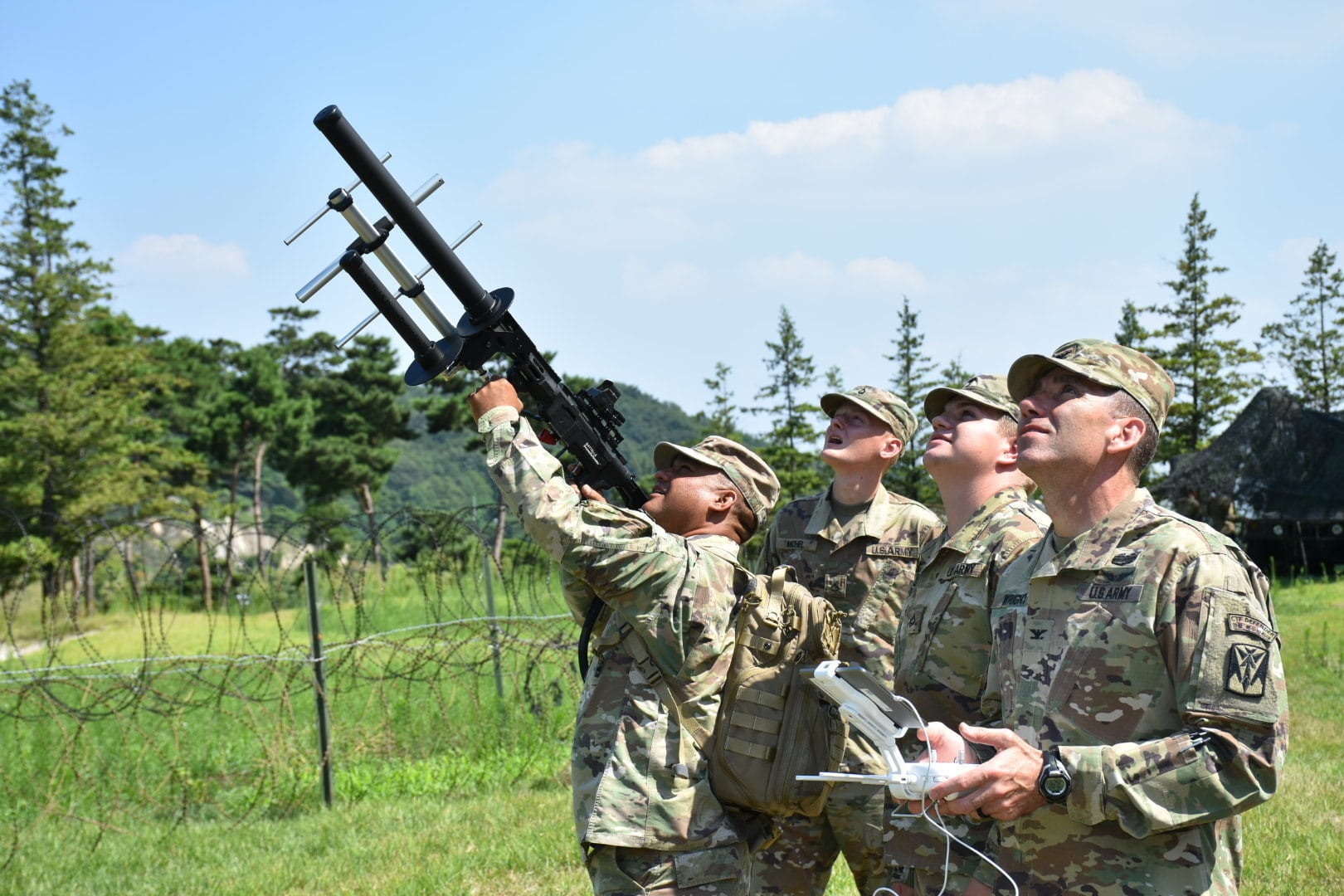WASHINGTON — Congress wants to rapidly advance a joint program to develop and field a capability for countering drones, requiring the Pentagon to field a system as early as next fall and adding more than $47 million to fuel the effort, according to the fiscal 2021 National Defense Authorization Act.
“The executive agent of the Joint Counter-Small Unmanned Aircraft Systems (C-sUAS) Office, as designated by the Under Secretary of Defense for Acquisition and Sustainment, shall prioritize the objective of developing and executing a plan to develop, test, and begin production of a counter unmanned aircraft system that can be fielded as early as fiscal year 2021 to meet immediate operational needs in countering Group 1, 2 and 3 unmanned aircraft systems,” read the NDAA language released Dec. 3.
Lawmakers would also like the capability, if practical, to be able to go after larger UAS.
The defense secretary delegated the Army in November 2019 to lead the effort to take a petting zoo of counter-drone systems, many of which were rooted in urgent needs from Middle Eastern conflicts, and consolidate capability into a select group of interim systems.
Army Maj. Gen. Sean Gainey took command of the Joint C-sUAS Office, and in late September, Pentagon leaders formulated a set of requirements to help counter small drones, laying a path for how industry can develop technology to plug into a single command-and-control system.
The office took more than 40 systems and whittled down the selection to three interim system-of-systems approaches — one from each service — for fixed and semi-fixed sites. The office also settled on the Light-Mobile Air Defense Integrated System from the Marine Corps as a mounted or mobile system; and Bal Chatri, Dronebuster and Smart Shooter for dismounted, hand-held systems. The C2 system is called the Forward Area Air Defense C2 and is sponsored by the Army, but it does include interoperable systems from the Air Force and the Marine Corps.
The office is following the selection of interim systems by developing and fielding an enduring system, and it held an industry day at the end of October to discuss requirements and expectations with interested vendors.
RELATED

Congress wants the office to “consider the selection of counter unmanned aircraft systems with specific emphasis on systems that have undergone successful realistic operational tests or assessments or have been or are currently deployed,” according to the NDAA. The capability, where reasonable, should build upon “systems that were selected for fielding in fiscal year 2021,” it read.
Furthermore, the system should be something that would allow the office to reduce or accelerate the timeline for initial and full operational capability, the bill added.
The system should also meet operational requirements to counter current threats “including effectiveness against unmanned aircraft systems that are not remotely piloted or are not reliant on a command link,” the language stated.
The use of autonomous and semiautonomous systems or processes is also desired, lawmakers noted, and the capability should be affordable with low operating and sustainment costs.
The chosen capability should also be flexible enough to allow for continuous integration of different sensors based on the unique needs of military installations and deployed forces as well as varying geographies and threats, lawmakers wrote.
Congress is requiring the office to brief the House and Senate defense committees on a selection process for counter-drone capabilities no later than 90 days after the NDAA is signed into law by the president.
The C-sUAS office, beginning early next year, will host the first opportunity for industry to demonstrate counter-drone technology aimed at small systems, which is the next step in a plan to test out new capabilities twice a year at common test ranges.
Jen Judson is an award-winning journalist covering land warfare for Defense News. She has also worked for Politico and Inside Defense. She holds a Master of Science degree in journalism from Boston University and a Bachelor of Arts degree from Kenyon College.




